Oil painting as an ancient art form, the maintenance and care of its tools is crucial. As an important tool in oil painting, the cleaning and maintenance of oil brushes is directly related to the service life of the brushes and the painting effect. This research report will comprehensively discuss the advantages and disadvantages of various oil painting brush cleaning methods, including the cleaning effects of vegetable oil, dishwashing detergent, mineral spirits, linseed oil, turpentine, self-oil, oil soap and other cleansers, analyze the best solvents for cleaning oil painting brushes, and provide professional cleaning methods and substances to avoid. By systematically sorting out the principles, operating steps and precautions of various cleaning methods, it provides oil painting artists and enthusiasts with a comprehensive and practical guide to cleaning oil painting brushes.
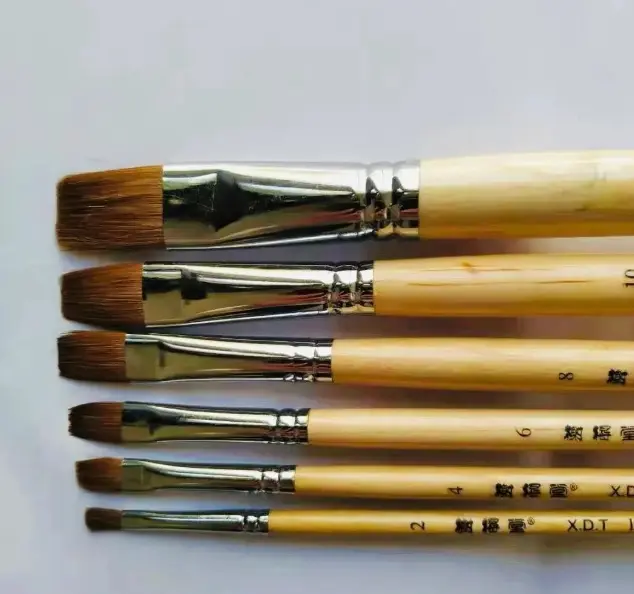
The Importance of Cleaning Oil Painting Brushes
Oil painting brushes will accumulate all kinds of pigments, mediators and impurities during the process of use, and these residues will not only affect the painting effect of the next use, but also lead to hardening of the bristles, deformation, or even complete obsolescence. Regular cleaning of oil painting brushes not only keeps them in good condition, but also prolongs the life of the brushes and ensures the quality of the painting.
Oil paints often contain dry vegetable oils as a medium, and these oils harden over time, making residues more difficult to remove. If not cleaned regularly, these residues will firmly adhere to the bristles and eventually render the brush unusable. Therefore, it is crucial for oil painting creators to master the correct cleaning method.
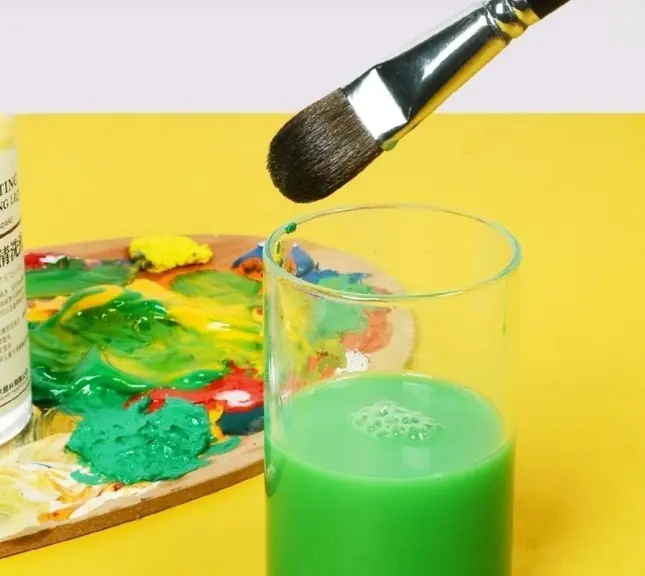
Advantages and disadvantages of various cleaners for cleaning oil painting brushes
Vegetable oil for cleaning oil painting brushes
Vegetable oil is a common oil painting medium, which can also be used for cleaning oil painting brushes. The main principle is to utilize the principle of “oil dissolves oil”, vegetable oil can dissolve the oily components in oil paint, so that the residual paint can be removed more easily.
Advantages:
- It can effectively dissolve the oil content of oil paint
- It is gentle to the bristles and will not over-dry them
- It is similar in nature to the mordants used in oil painting and will not change the characteristics of the bristles
Disadvantages:
- The cleaning effect may not be as thorough as professional cleaners
- It needs to be used in conjunction with other cleaning steps to ensure complete removal of the pigment
- Vegetable oils may leave a residue of their own on the bristles, which may require further cleaning
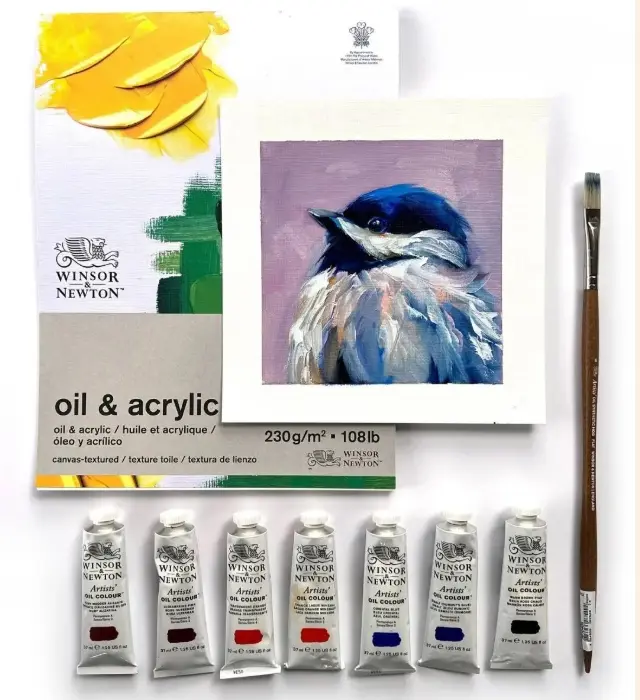
Detergent Cleaning Oil Painting Brushes
Detergent is a common household cleaning product that can also be used to clean oil painting brushes. It works mainly through the action of surfactants to emulsify oily residue, making it easier to be rinsed away by water.
Advantages:
- Easily available and affordable
- Stronger cleaning effect, can effectively remove oily residue
- Easy to use, can be mixed with warm water
Disadvantages:
- May over-clean, resulting in the bristles becoming dry
- Some detergents contain harsh chemicals, which may damage the bristles of some materials
- Need to be rinsed thoroughly, to avoid residue that affects the elasticity and softness of the bristles
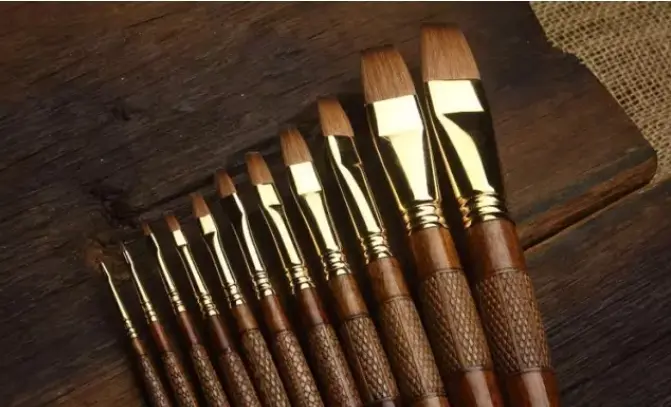
Cleaning Solvent-Free Paint Brushes
Solvent-free cleaners are Volatile Organic Compound (VOC)-free cleaning products that are commonly used to clean a variety of tools and surfaces. In oil painting brush cleaning, solvent-free cleaners are effective in removing residual pigments and mordants.
Advantages:
- Environmentally friendly, does not contain harmful solvents
- Cleans well, removes pigment residue thoroughly
- Safe to use, reduces harmful inhalation
Disadvantages:
- May affect the bristles of some materials
- Relatively expensive
- Need to rinse thoroughly after cleaning to avoid affecting the performance of the bristles
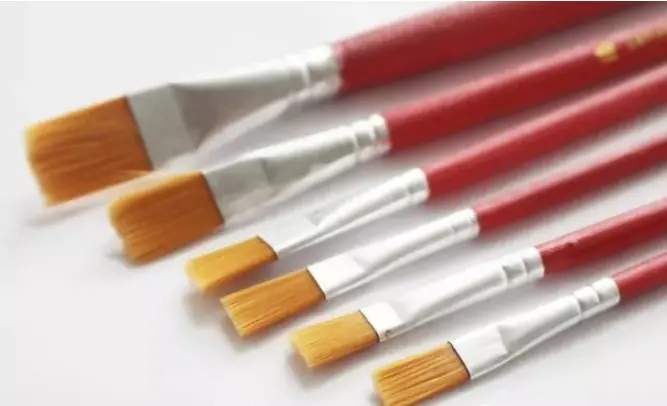
Mineral spirits for cleaning oil painting brushes
Mineral spirits are oily substances derived from petroleum that have excellent solvency and lubricating properties and can be used to clean oil painting brushes. It can be used to clean oil painting brushes. It mainly dissolves the oily components in the pigment, making it easier to be removed.
Advantages:
- It can effectively dissolve the oily ingredients in oil paints
- Less irritating to the bristles
- It can provide a certain degree of moisturizing effect and protect the bristles
Disadvantages:
- It may leave oily residue, which affects the use of the bristles
- It needs to be used in conjunction with other cleaning steps to ensure a thorough cleaning
- Mineral spirits may contain impurities, which may affect the quality of the bristles in the long-term use of the brushes
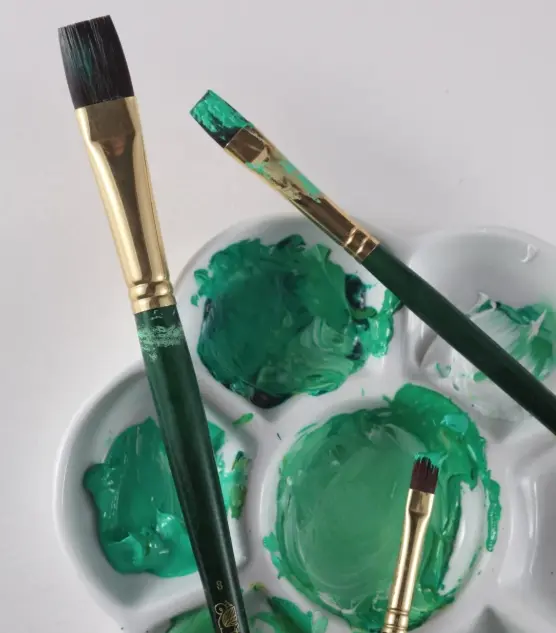
Linseed Oil for Cleaning Oil Painting Brushes
Linseed oil is a common oil painting medium that can also be used to clean oil painting brushes. It is a drying oil that reacts with the oily components of oil paints to help remove residue.
Advantages:
- Similar in nature to the mordant in oil paints, it can effectively dissolve the residue
- Forms a protective film on drying, which helps to protect the bristles
- Provides some moisturization to the bristles during the cleaning process
Disadvantages:
- Cleaning may not be as thorough as with professional cleansers
- Requires a combination of other cleansing steps to ensure complete removal of the pigment
- Linseed oil by itself may leave residues on the bristles, which will need to be further cleansed
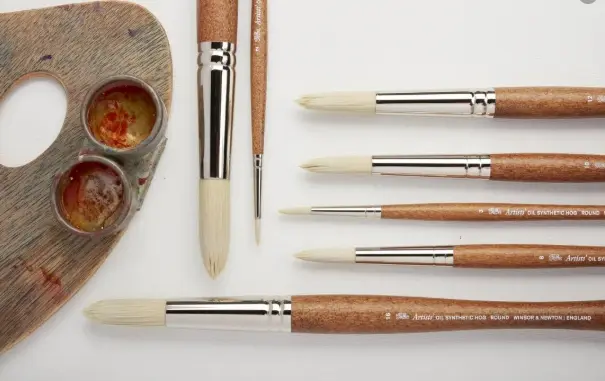
Turpentine for Cleaning Paint Brushes
Turpentine, an oily substance extracted from pine trees, is a common oil paint thinner that can also be used to clean oil paint brushes. It works mainly by dissolving the oily components in the paint, making it easier to remove.
Advantages:
- It can effectively dissolve the oil content in oil paint
- It dries quickly and saves cleaning time
- It is relatively cheap and economical
Disadvantages:
- It may over-dry the bristles of the brush, affecting their flexibility and softness
- It has a pungent odor, which may affect the respiratory tract when used for a long period of time
- It needs to be used in conjunction with other cleaning steps to ensure a thorough cleaning, and the residues of paint may not be completely removed by using turpentine alone
Self Oil Cleaning Paint Brushes
“Self oil” may be the name of some specific product or cleaning method for which there is no clear definition. In the context of oil brush cleaning, it may refer to a specific cleaner with an oil-based component, or to the use of a medium oil used in the painting process to clean the brushes.
Advantages (assuming it is an oil-based cleaner):
- May be similar in nature to the mordants used in oil paints, and may be effective in dissolving residues
- May be gentle on the bristles, and not overly drying
- Easy to use, and may not require the purchase of an additional cleaning product
Disadvantages (assuming it is an oil-based cleaner):
- May not completely remove paint residues, and may need to be used in conjunction with other cleaning procedures
- May leave an oily residue that can interfere with the use of the brush
- May be more expensive, and more costly to use May leave oily residue that affects the use of the bristles Price May be higher and more costly to use
Oil Soap for Cleaning Oil Painting Brushes
Oil soap is a type of soap that contains oil-based ingredients that can be used to clean oil painting brushes. It combines the cleaning power of soap with the solubilizing power of oil-based ingredients to effectively remove oily residue from oil paints.
Advantages:
- Effectively dissolves and removes oily residue from oil paints
- Combines the cleaning power of soap with the protection of oily ingredients
- Easy to use, can be mixed with water
Disadvantages:
- May not be able to completely remove some stubborn paint residue
- Requires a thorough rinsing to avoid residue affecting the performance of the brush bristles
- May be more expensive and costly to use
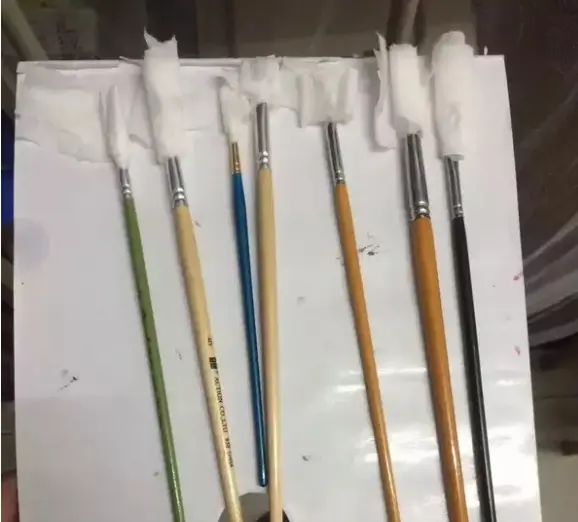
The Best Solvent for Cleaning Oil Brushes
According to various sources and professional advice, the best solvent for cleaning oil brushes is a combination of soap and hot water. This method of cleaning is both effective in removing paint residue and gentler on the bristles, without over-drying or damaging them.
The steps for soap and hot water cleaning are as follows:
- Prepare a basin of warm water and an appropriate amount of soap (either dishwashing liquid or a special soap for washing brushes)
- Add the soap to the warm water and stir well to form a soapy water
- Soak the bristles of the oil brush in the soapy water and gently rub them together
- Use your fingers to comb through the bristles and help to remove any residual paint
- Rinse the brush well with clean water to make sure there is no soap residue
- Absorb the water with a paper towel or a clean washcloth Rinse with water to ensure there is no soap residue
- Finally the bristles can be coated with a small amount of blended oil, linseed oil or safflower oil for extra protection and moisturizing
This cleaning method is particularly good for thorough cleaning, but is not suitable for frequent use as it may shorten the life of the bristles. For daily or quick cleaning, professional pen wash or turpentine can be used, but you need to make sure you rinse thoroughly to avoid residue build-up.

Cleaning oil painting brushes
Routine Cleaning Methods
Preparation:
- Prepare a basin of warm water and an appropriate amount of soap or detergent
- Prepare some paper towels or a clean towel
Cleaning Steps:
- Wipe off excess paint from oil painting brushes with a paper towel
- Soak the bristle portion of the brush in the soapy water and gently rub it in
- Comb the bristles through the brush with your fingers to help remove any residual paint
- Rinse it off with clean water to ensure that there is no soap residue
- Use a paper towel or a clean towel to Absorb the water
- Finally, you can apply a small amount of blended oil, linseed oil or safflower oil to the bristles for extra protection and moisturizing.
Professional Cleaning Methods
Use a professional pen wash:
- Choose a pen wash that is natural and non-irritating
- Apply the wash to the bristles and rub gently
- Rinse with clean water to ensure no residue is left behind
- Absorb the water with a paper towel or clean towel
- Finish off with a small amount of oil to the bristles for extra protection and moisturizing
Use turpentine for cleaning:
- Prepare some turpentine and water
- Soak the bristles of your brush in turpentine. Soak the bristles of the brush in turpentine and gently rub them together.
- Rinse well with water to ensure no turpentine remains.
- Clean further with soap or detergent to ensure that no residue remains.
- Rinse well with water to ensure no soap remains.
- Absorb the water with a paper towel or a clean towel.
- Finally, you can apply a small amount of oil to the bristles to provide extra protection and moisturization.
QUICK CLEANING METHODS
Wipe with a paper towel:
- Wipe off excess paint with a paper towel after each use of the oil painting brush
- Wipe in a circular motion, in one direction
- This method reduces the drying and hardening of paint on the bristles
CLEANING WITH A BRUSH WASHING BUCKET:
- Prepare a brush-washing bucket or an empty jar
- Add the appropriate amount of thinner or turpentine
- Soak the bristle portion of the oil painting brush in the thinner or turpentine
- After the used cleaning liquid settles, the upper portion of the The clarified liquid can be poured into another container and reused
- Thoroughly clean oil painting brushes regularly to ensure that no residue accumulates

Substances to avoid when cleaning oil painting brushes
Avoid hot water:
- Excessively hot water may damage the bristles, causing them to split or lose their elasticity
- It is recommended to use lukewarm water rather than hot water
- Avoid harsh chemicals:
- Avoid cleaning agents that contain strong acids, bases, or other harsh chemicals
- These may damage the bristles, or even cause them to become completely obsolete
Avoid over-cleaning:
- Avoid frequent cleaning of your oil painting brushes, in particular Avoid frequent cleaning with soap or detergent
- Over-cleaning may cause the bristles to lose essential oils and become dry and brittle
Avoid using unsuitable tools:
- Avoid using stiff bristles or other tools that may damage the bristles to clean your oil painting brush
- Use appropriate methods and tools to ensure that you do not damage the bristles
- Avoid reusing the brush if it has not dried thoroughly:
- Ensure that the brush has dried completely before reusing it again
- Wet bristles may harden or deform and affect the painting brush. Wet bristles may become hardened or deformed, affecting their effectiveness.






